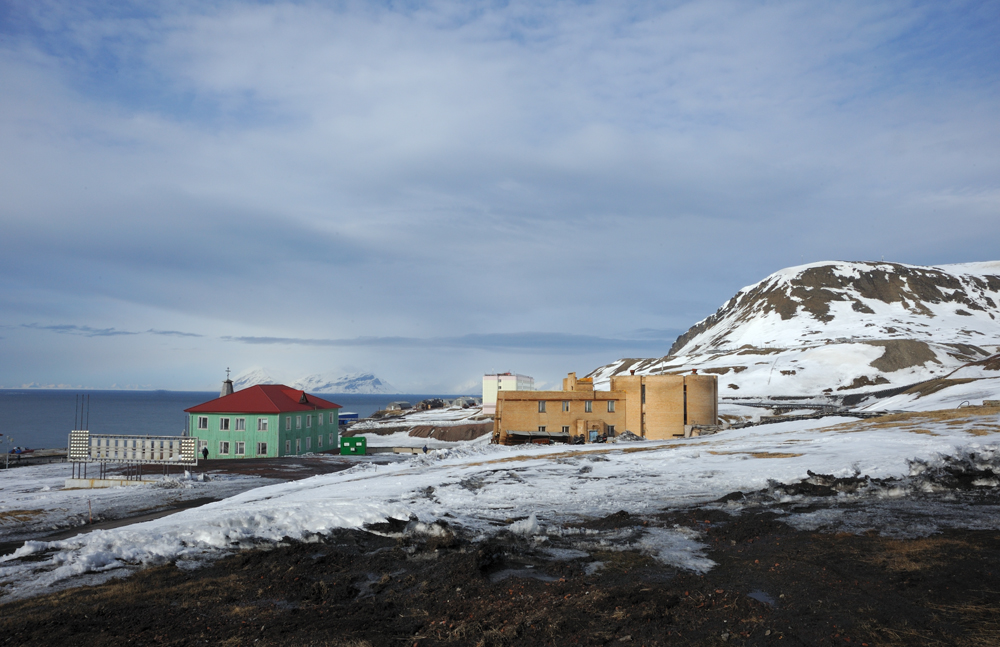
Spitsbergen
Spitsbergen. What, why, and how.
Spitsbergen. Voyage. Longyear
Spitsbergen. Ymerbukta
Spitsbergen. Esmarkbreen
Spitsbergen. Nansenbreen. Borebreen
Spitsbergen. Whiteout
Spitsbergen. Borebreen. Vintervegen
Spitsbergen. Klampebreen. Osbornebreen
Spitsbergen. Osbornebreen. Three Crowns
Spitsbergen. Fatumbreen
Spitsbergen. Kings Bay
Spitsbergen. Ny-Alesund
Spitsbergen. Under the airplane wing.
After our return to Longyear, we had one more day before our flight home. It should be used properly. We started to check touring companies asking what they can offer to us. First, we checked “Grumant”, the office of Russian tour operator in Longyear. They were nice but can offer only multiday tours. At the same time, their Norwegian neighbour offered us several one-day options. We choose snowmobile tour to Barentsburg.
Actually, at the present time, there are only three functional settlements on Spitsbergen – Longyear, Ny-Alesund and Barentsburg. We already been in the first two, so the visit to Barentsburg, Russian town on Spitsbergen, was an interesting idea.
About the specific status of Spitsbergen after Svalbard treaty, I already wrote. Each country that signed this treaty has rights for economics activity on Svalbard (in the frame of Norwegian law). At the present time, only Russia (except Norway itself) realizes this right. Main Russian economical activity is coal mining.
Russia has the interest in Svalbard coal from the beginning of XX century. They made investigations, bought some places from their previous owners, and from 1931 the company “Arktikugol” finally occupied three places – Grumant, Pyramiden, and Barentsburg. In Grumant the mining became non-efficient to 1961, and the settlement was abandoned. In Pyramide, the mining was started only in 1946, and in 1998 the settlement was deactivated. Only Barentsburs is still alive.
The coal mining on the Bareresburg place was originally started by Norwegians, later on, the place was bought by Dutches, who named it after Willem Barents. In 1932 it was bought by “Arktikugol”.
There are no roads between settlements on Spitsbergen. There is 55 km as a crow flies between Longyear and Barentsburg. From Longyear, Barentsburg can be reached by air, sea and snow. There are no regular air flight, only charter helicopters, mostly connected with flights from Russia with miner shifts. In summertime, there are boat tours almost every day. During the winter (winter is anytime when the snow present) the easiest way is by snowmobile. Locals mainly use this way, luckily almost everybody on Spitsbergen has a snowmobile.
We didn’t want to spend again hours on the boat and chose snowmobiles. It was the group tour exact in the day we wanted. It is about 150 km both ways by snowmobile with two steep passes and ice blisters (springtime, end of the season). Should I say that I never even sit on a snowmobile before? However, everything should happen first time once.
In the morning guides gave us warm suits, boots, gloves and helmets, gave a short lesson about how to drive a snowmobile, and we went on. Snowmobile is not diffical in control, but requirs some practive anyway. So, first kilometers were challenge for me, but after I used to it and even enjoy.
Our group
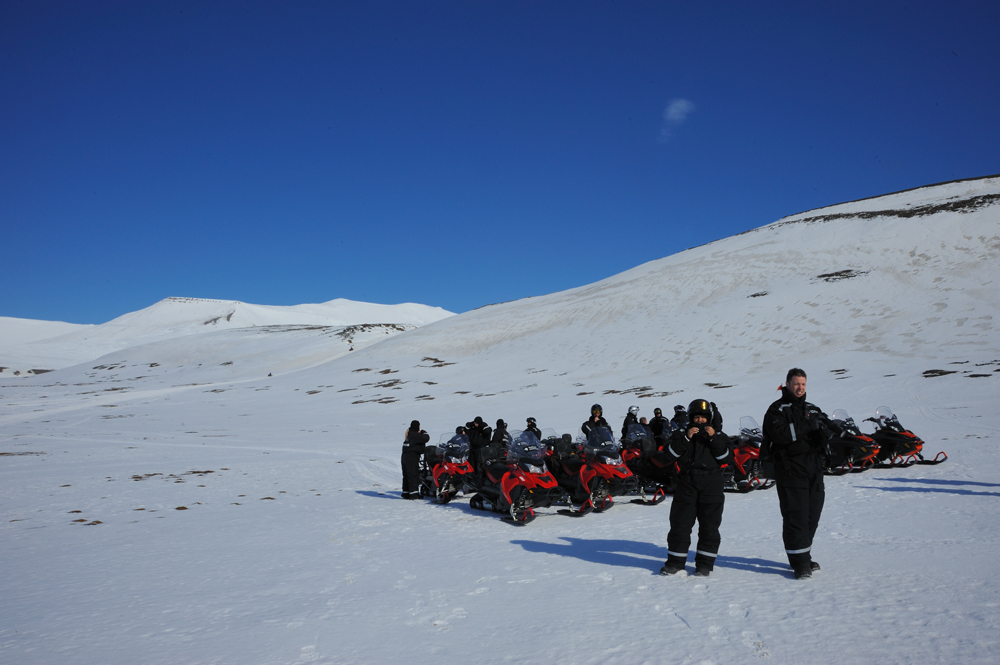
Snow road
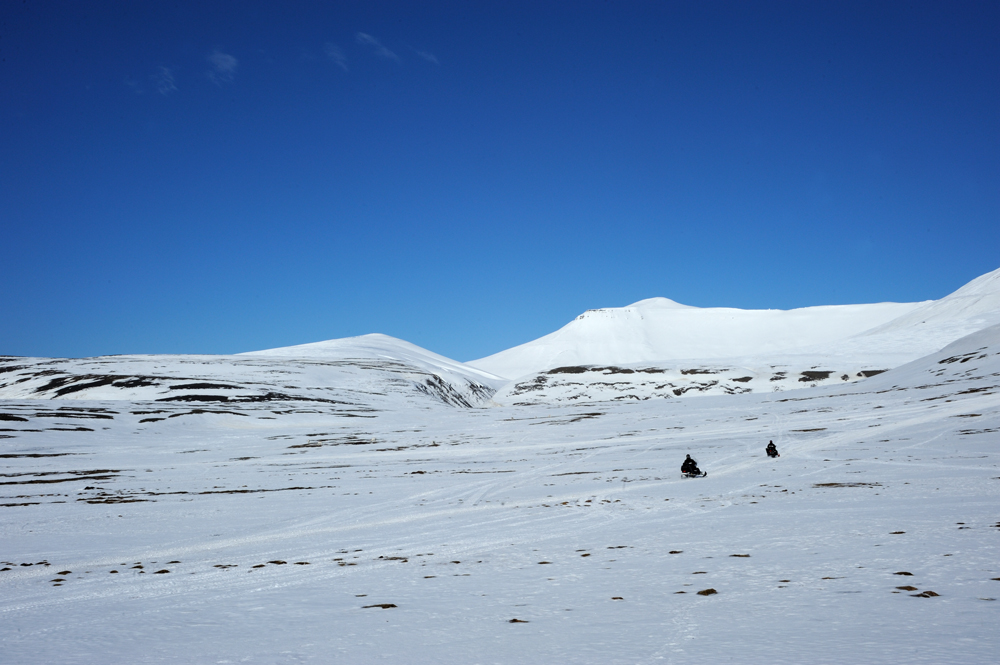
After two steep passes we came to the valley with reindeers. There is no glacier here, grass grows during summer, even in May some dry grass can be found on thraw holes, and deers look for food in this place.
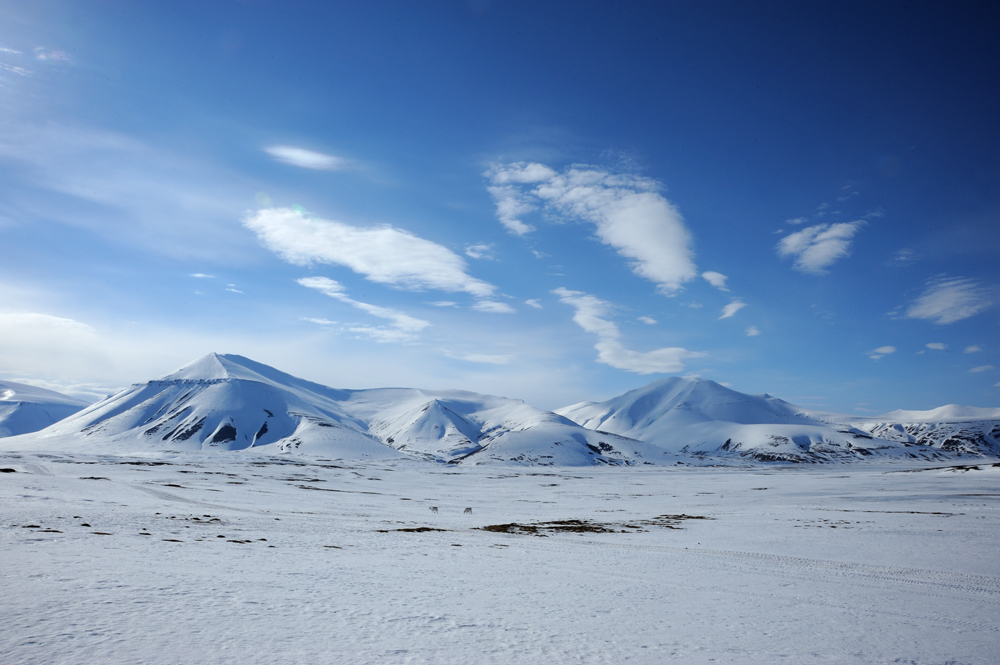
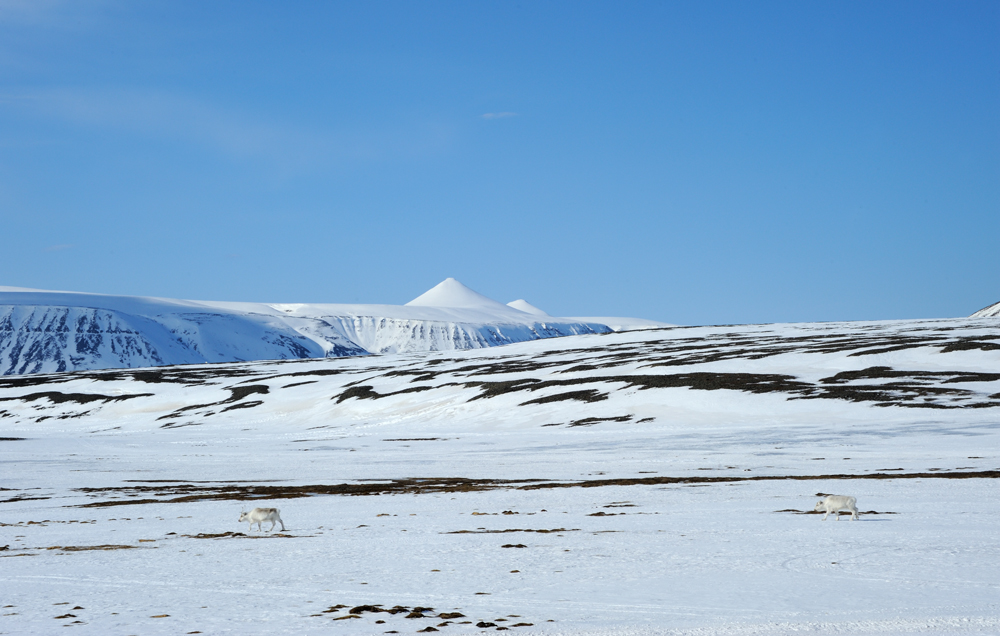
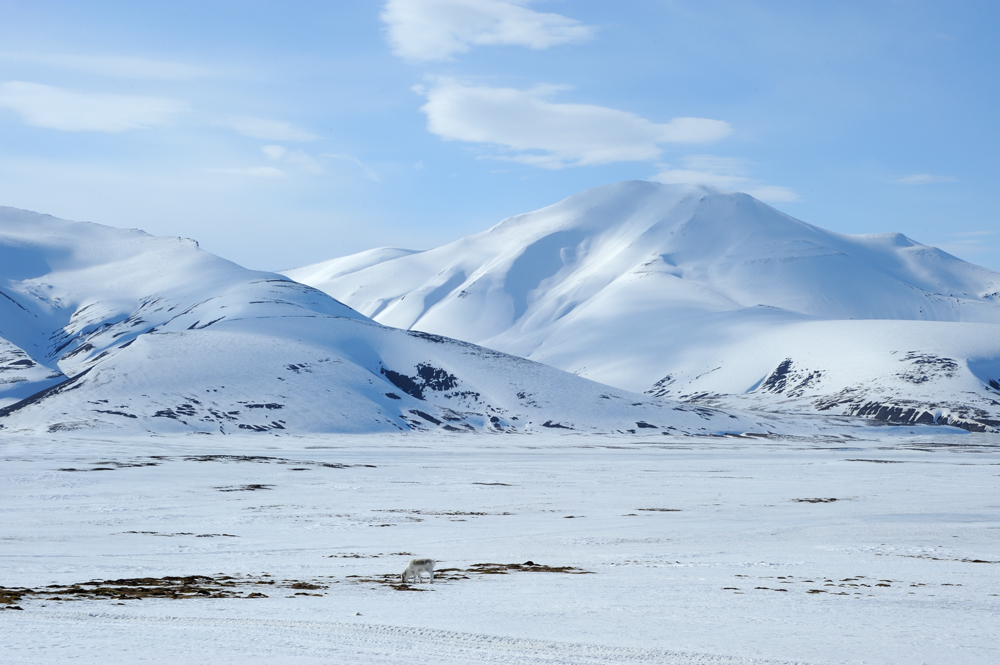
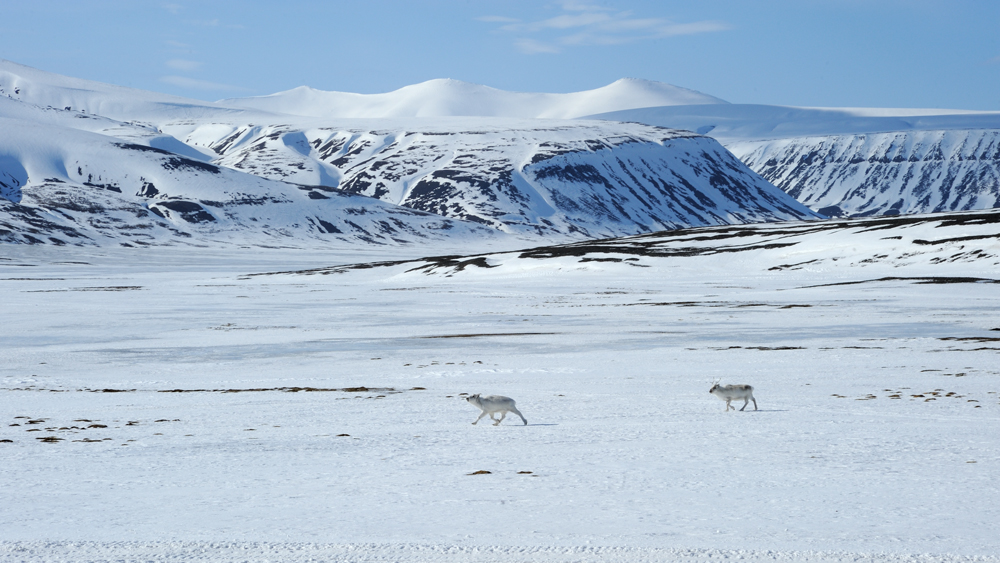
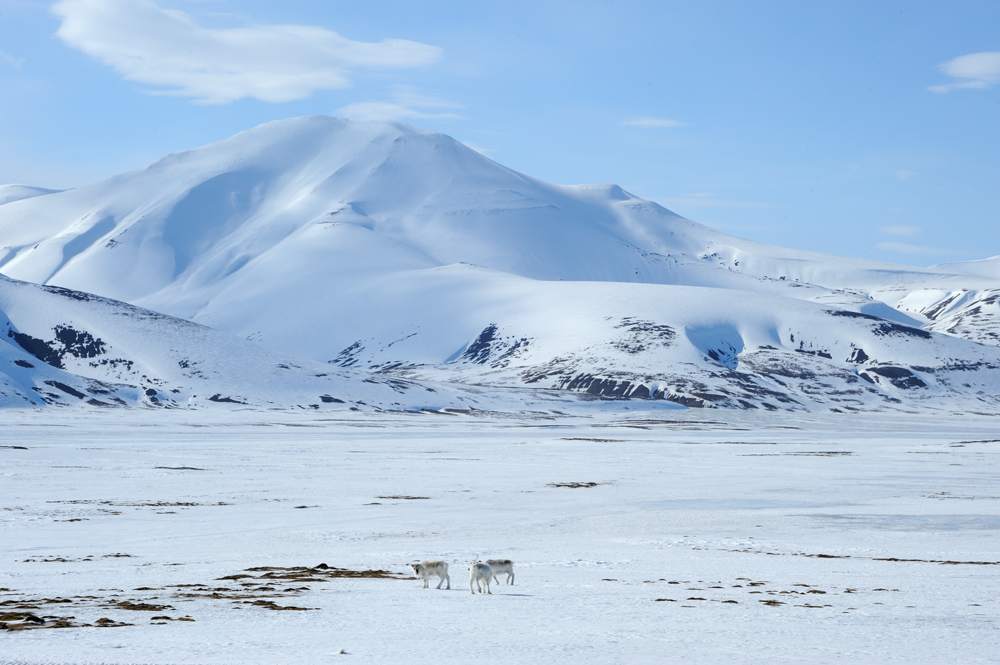
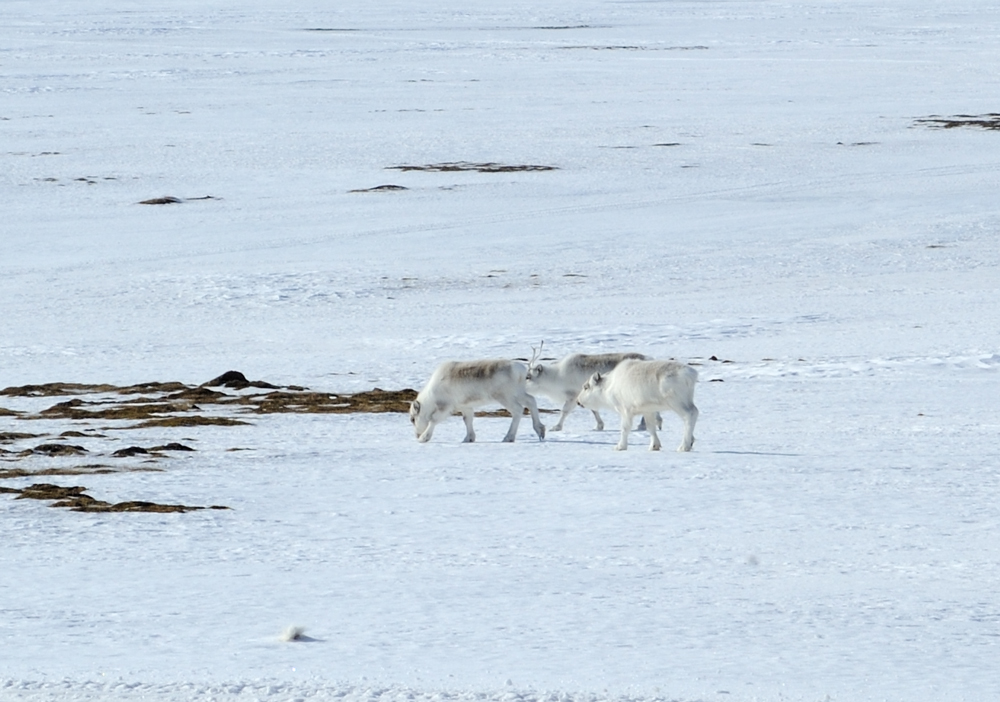
Stright on the west from this valley, on the sea coast the abandoned Russian settlement Grumant locates. Aroudd Grumant (in 20 kilometres radius only) lives the third terrestrial mammal of Spitsbergen. Invasive species. Microtus levis aka Sibling vole. In Soviet times in Gruman and Barentsburg people tried to maintain some agriculture, greenhouses and livestock. Somewhen between 1930s-60s, these voles were delivered with the hay for the livestock. The voles survived although their native areal doesn’t include Arctic areas. However, their life on Spitsbergen is only surviving and reproduction. At normal condition, Sibling vole lives about six months, here, on Spitsbergen, not more than three. Three months is an age when vole completely grew up. At such severe conditions the only option is reproduction at baby age. Female voles become pregnant first time at 17 days, males stay innocent longer, about a month. Well, males don’t need to gestate and feed, only to spread their genetic pool. Pregnancy is about 20 day, and after several hours after labour, a vole is ready for a new pregnancy.
Vole produces six offsprings at one time and it does it about four times per season (and per life). Always barefoot, pregnant and in the kitchen. The life of occupants is difficult.
The vole enjoyed coming spring and we continued out travel.
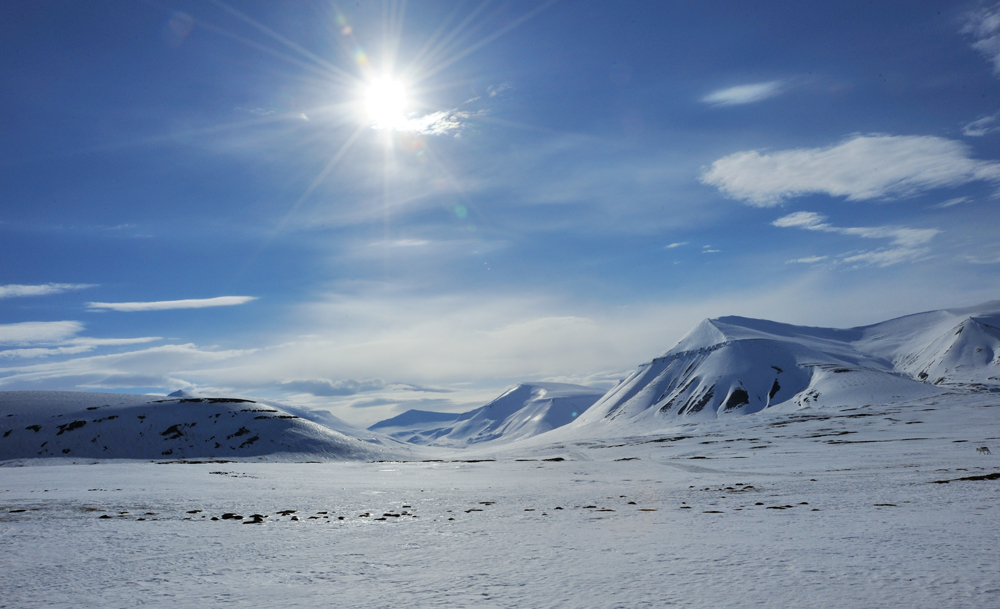
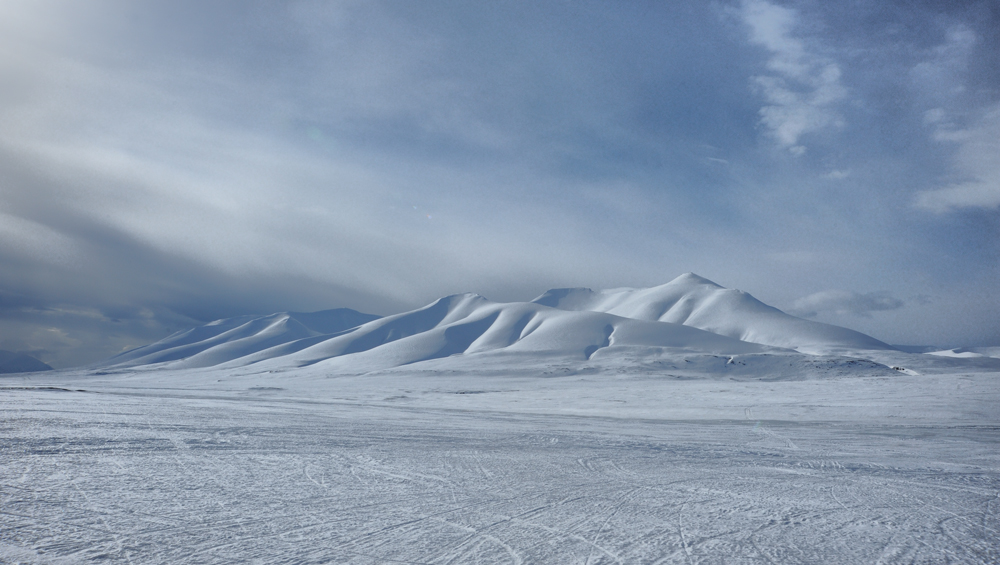
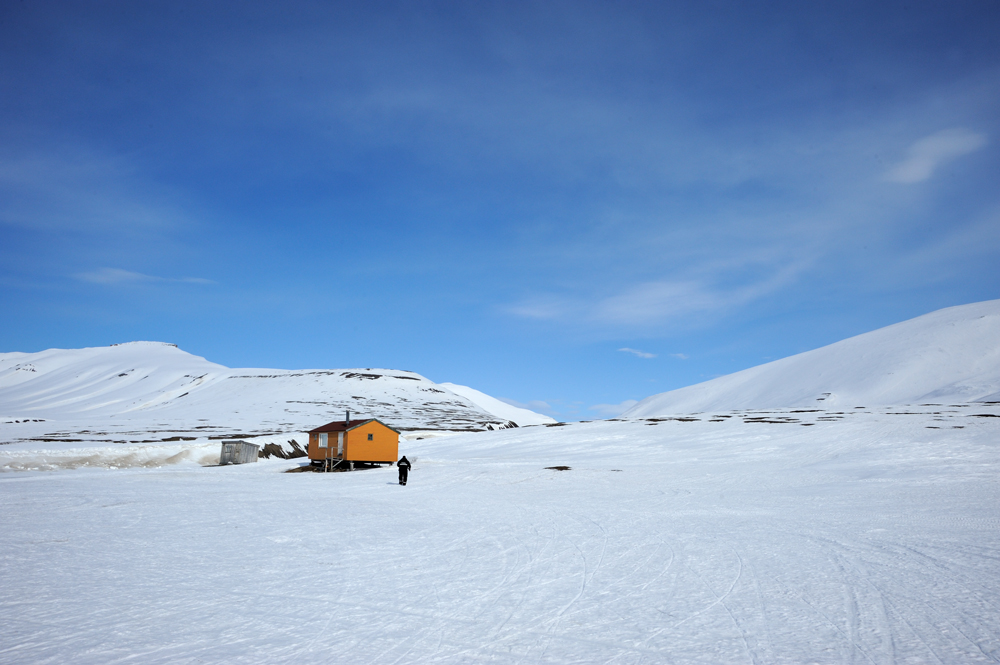
Barentsburg appeared.
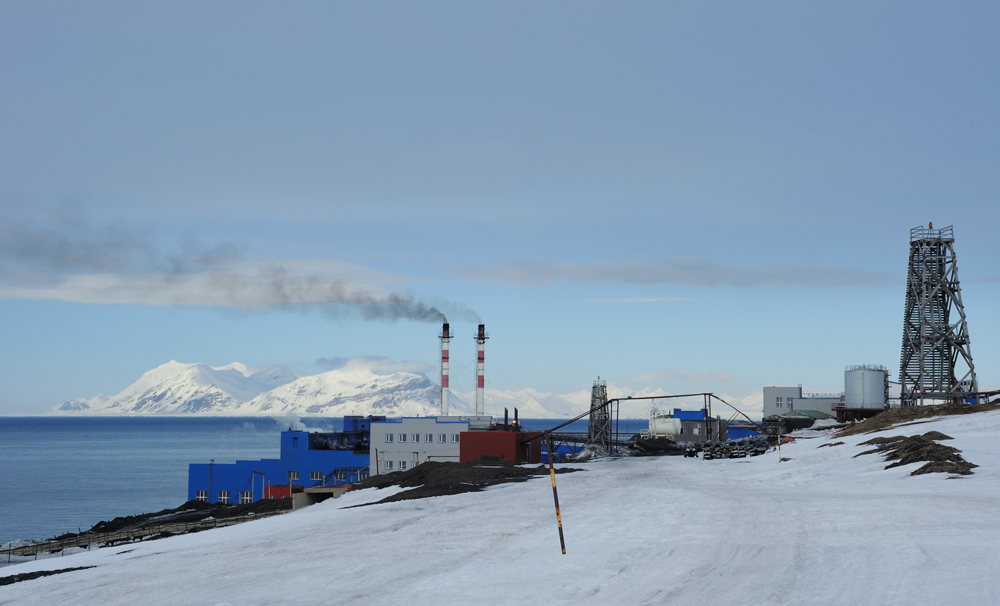
We left snowmobiles on the town edge and waited for a bus. The bus was very old “pasik” that smelled as all “pasik”s from my childhood. At first, we had dinner in the restaurant “Red Bear”, a sort of pro-communist polar bear.
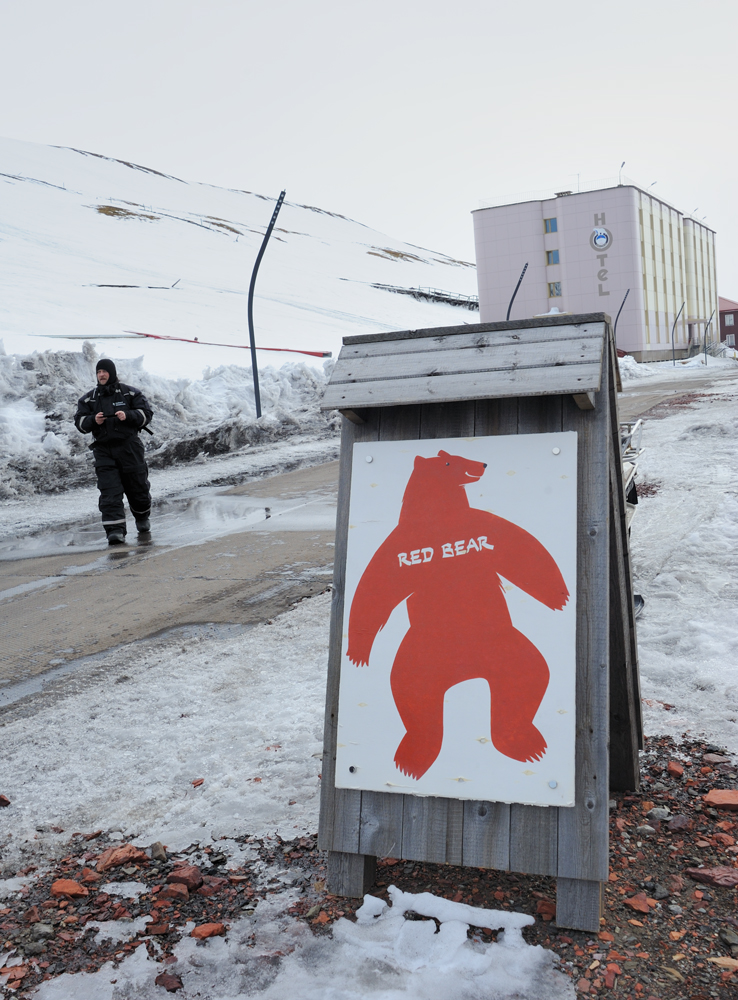
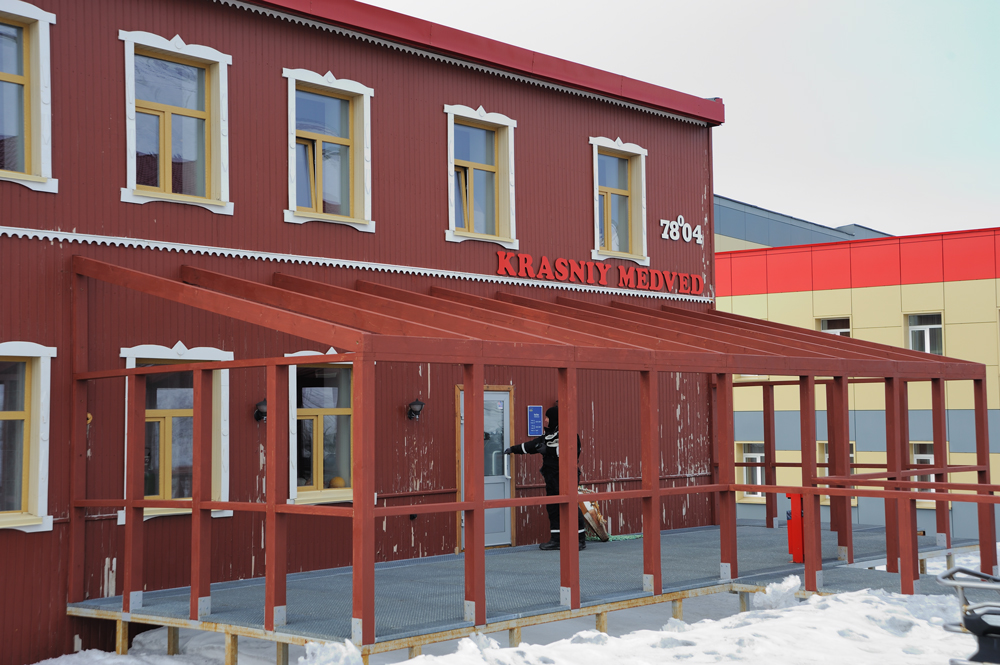
The dinner was nice with some Rissian charm.
After dinner, we had a tour around the town with a local guide.
After the end of Soviet Union Barentsburg started to decay, but after 2008 some reconstructions and repairs were done. However, it is far away from the previous success of the town. At the present time, Barentsburg has only 500 inhabitants in the opposit to 1500 in Soviet times.
“Arktikugol”, the owner of whole Barentsburg. This is the administrative building and the entrance to the mine. The mine is deep underground and far inland, so it takes about two hours for miners just to get to their workplace.
Miners work usually by two-years shifts bringing to Barentsbur their family. 80% of miners from Ukraine, looks like the salaries from “Arktikugol” don’t high enough to attract Russian miners.
The coal production also doesn’t high, it just covers the needs of the town.
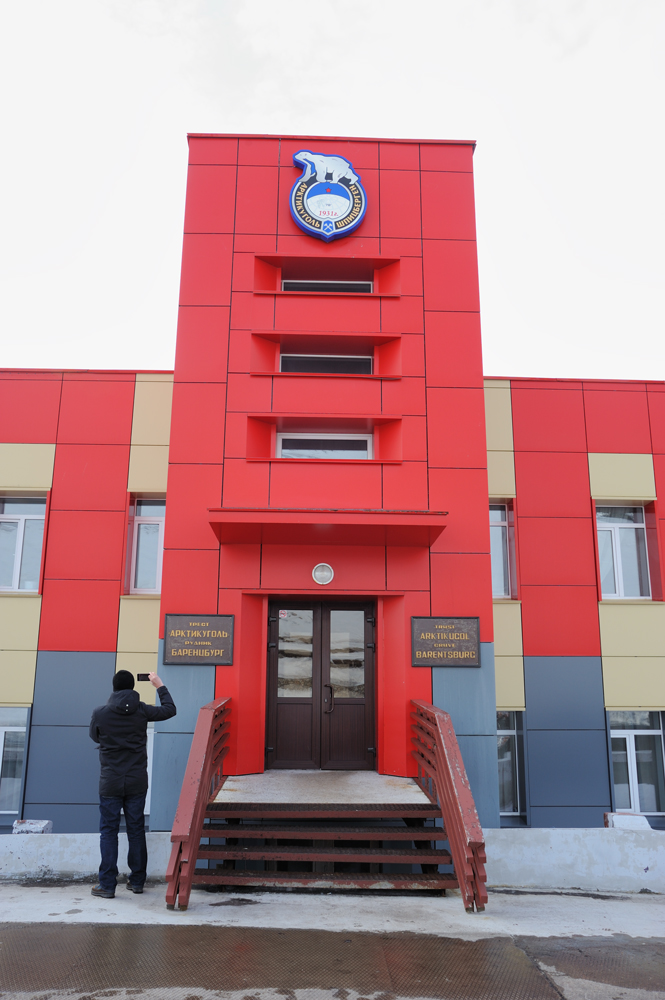
“Arktikugol” searches for other economical possibilities on the island and tries to develop touristic business. There are hotel “Pomor” and a hostel in the town.
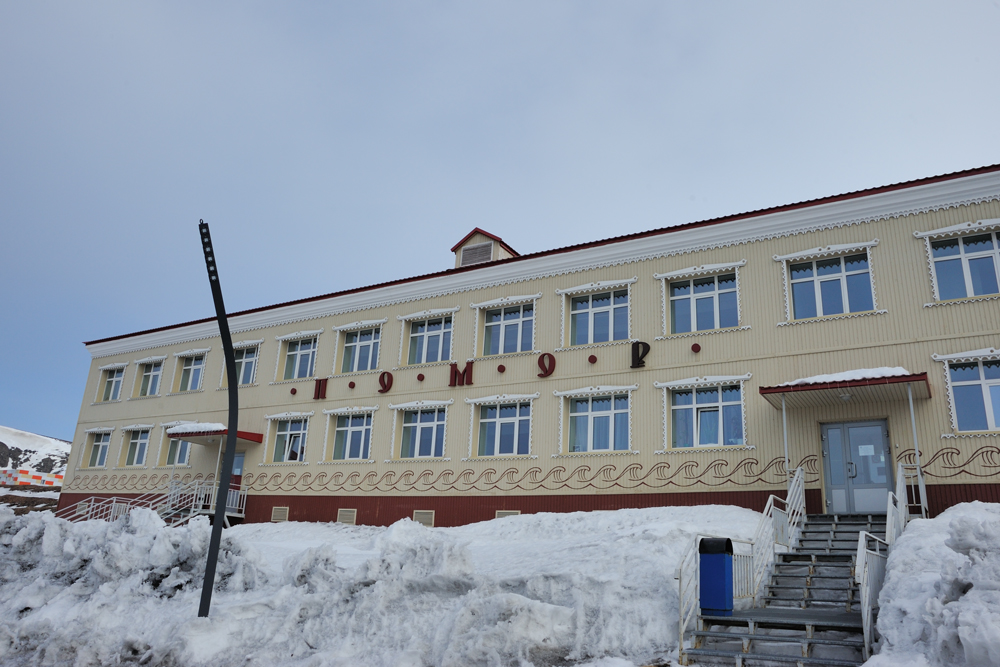
Restaurant “Red bear” and Brewery. Some times ago the brewery was declared as the most northern in the world, but now it keeps the only second place after the brewery in Longyear. Cannot say anything about the taste, we keep soberness before our drive back. Besides beer, they serve also the hardest coctail in the wolrd (they say so) – 78% abv that corresponds to latitude. They call it “Good Bay”.
Apartment buildings for the workers, relatively fresh painted. In the left corner the apartments for the administration.
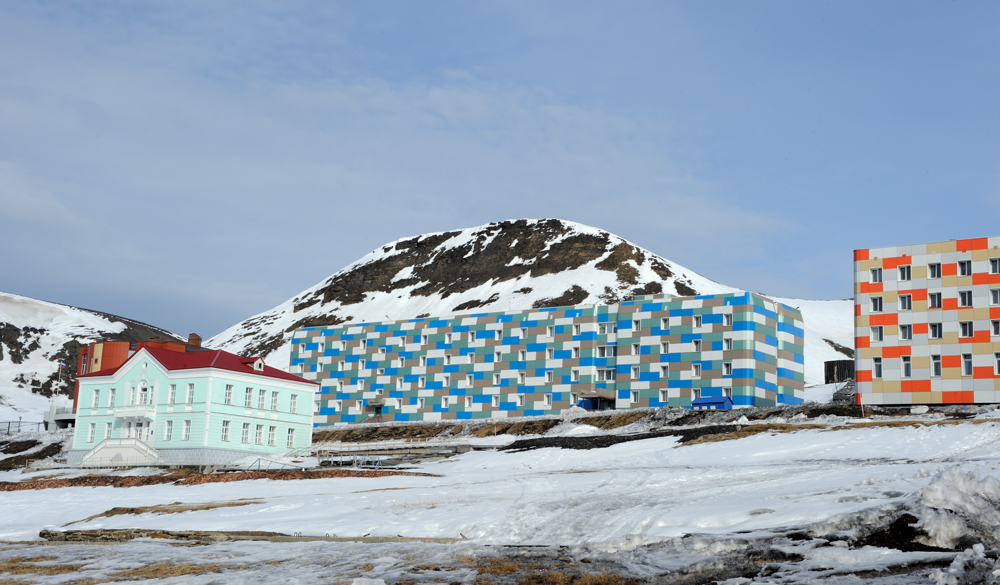
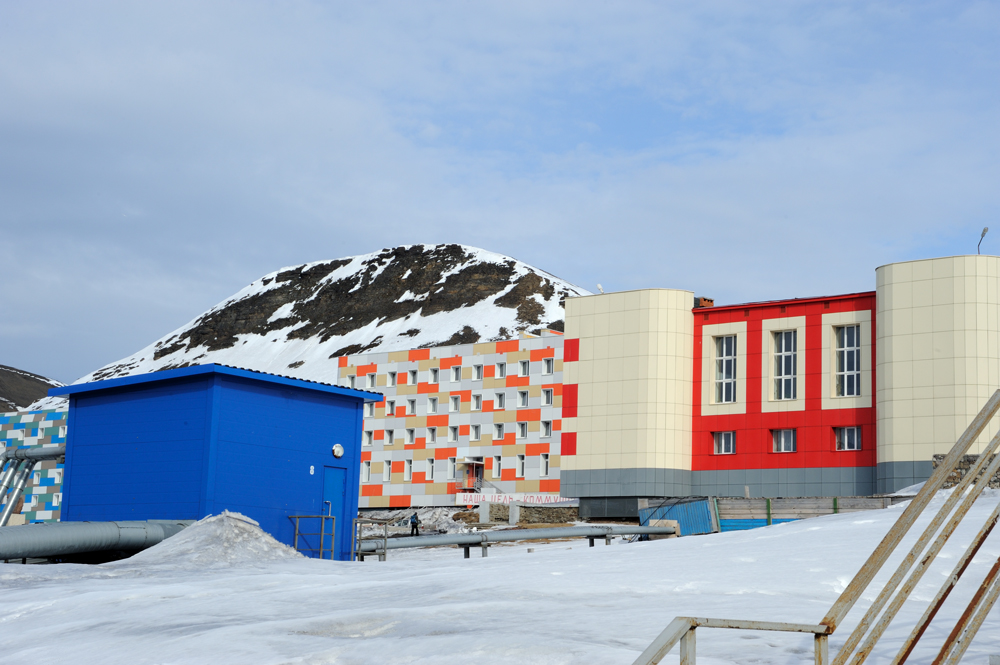
The goals of Baretsburg inhabitants doesn’t change since Soviet time (the banner says: Communism is our goal) and Lenin is still ahead of everybody.
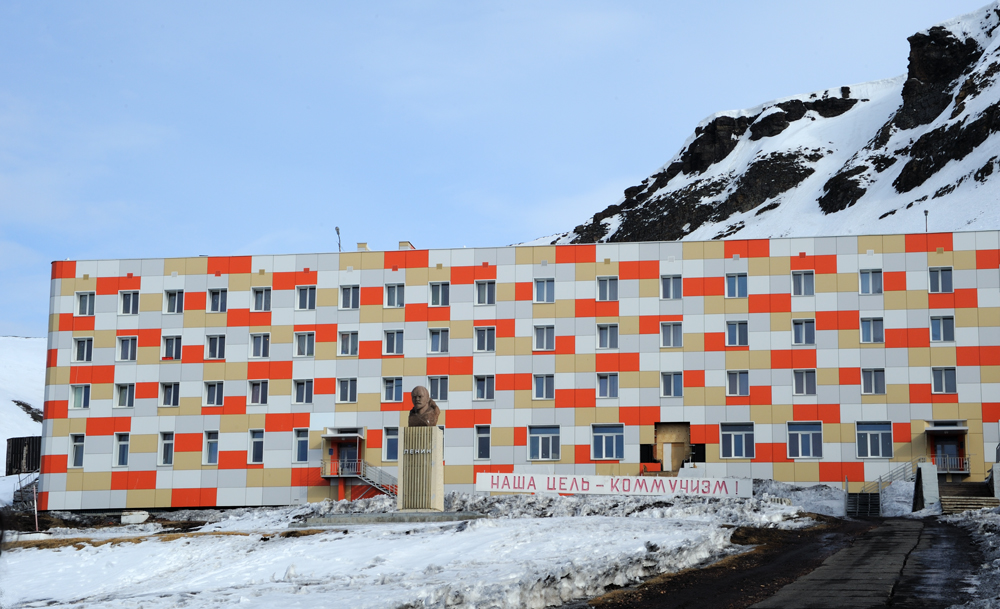
The town has the school with kindergarten for 80 children of all ages, gym with swimming pool (temporary closed), and the recreation centre.
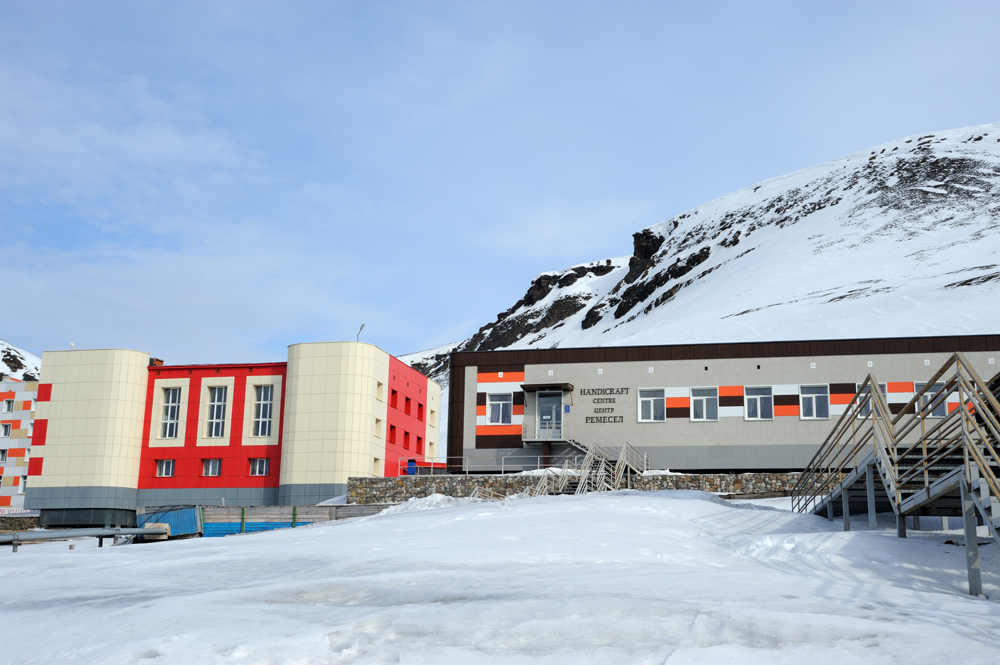
Because everything that was built before 1946 on Svalbard is considered as historical heritage and protected by low, Barentsburg has a lot of abandoned buildings. They cannot find the usage for them, so houses just stay here empty and partly brocken.
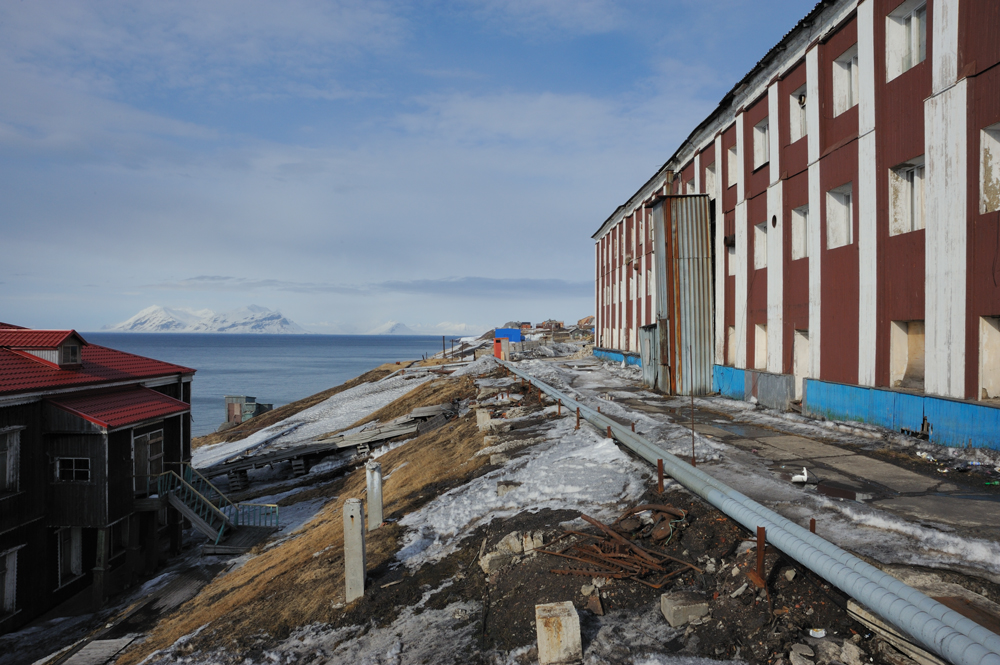
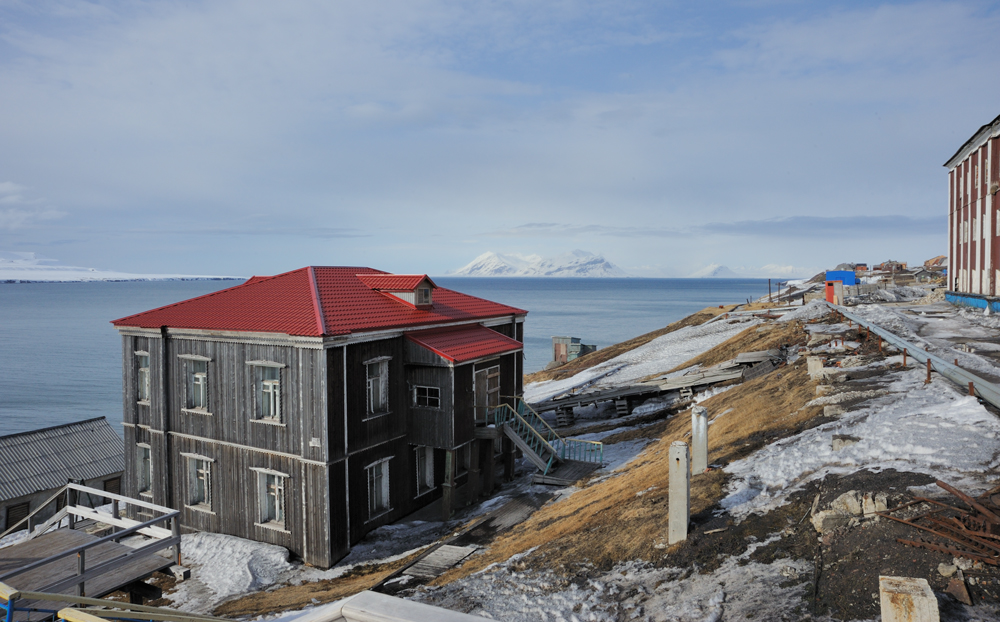
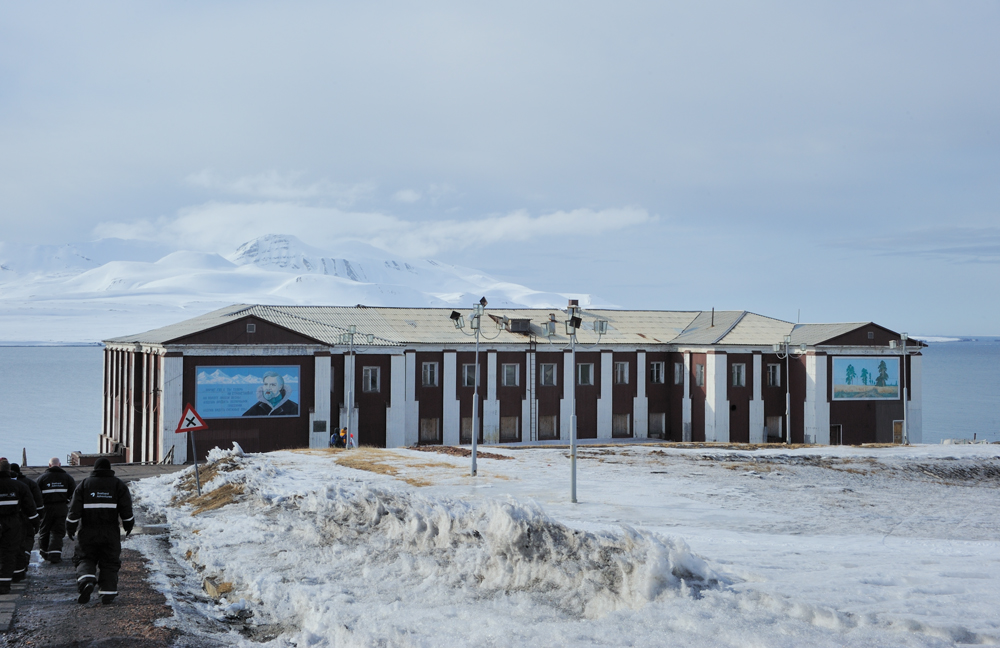
A man on the poster is known among guides as “the man with red lips”.
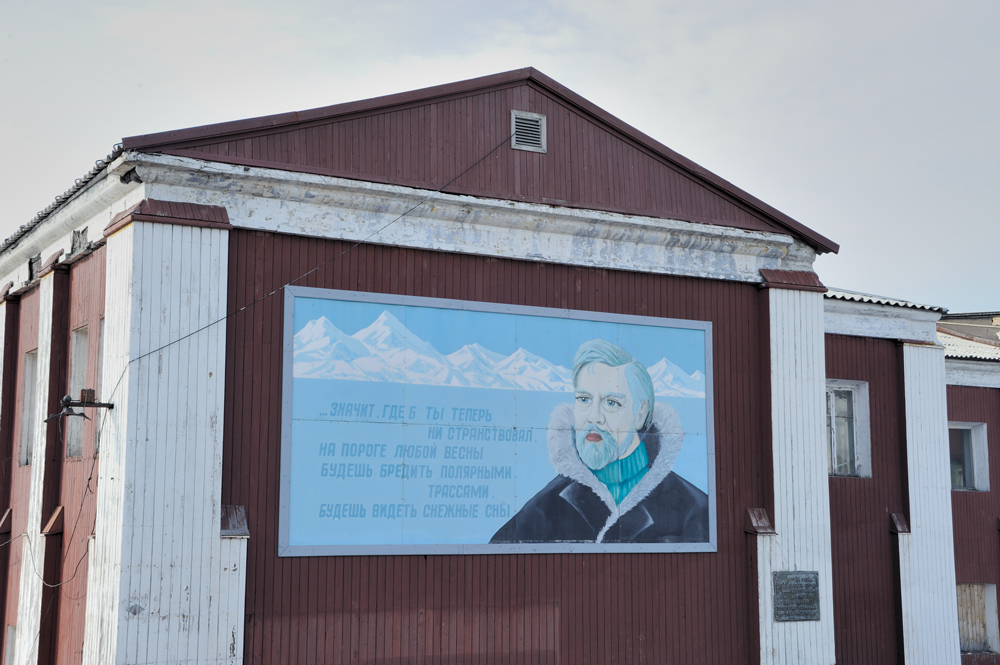
Part of the port.
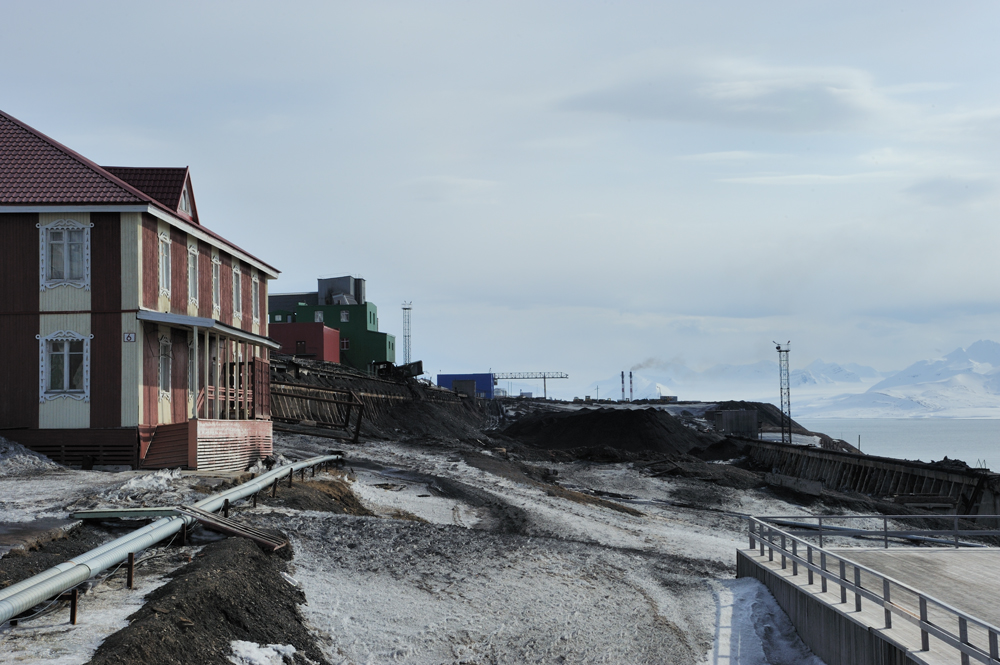
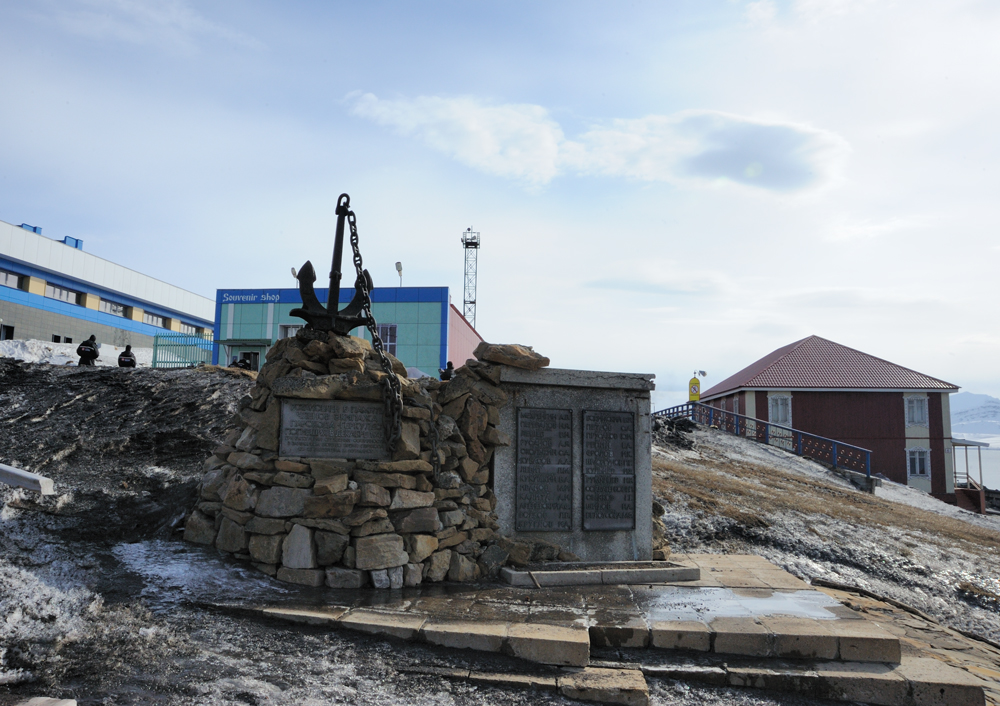
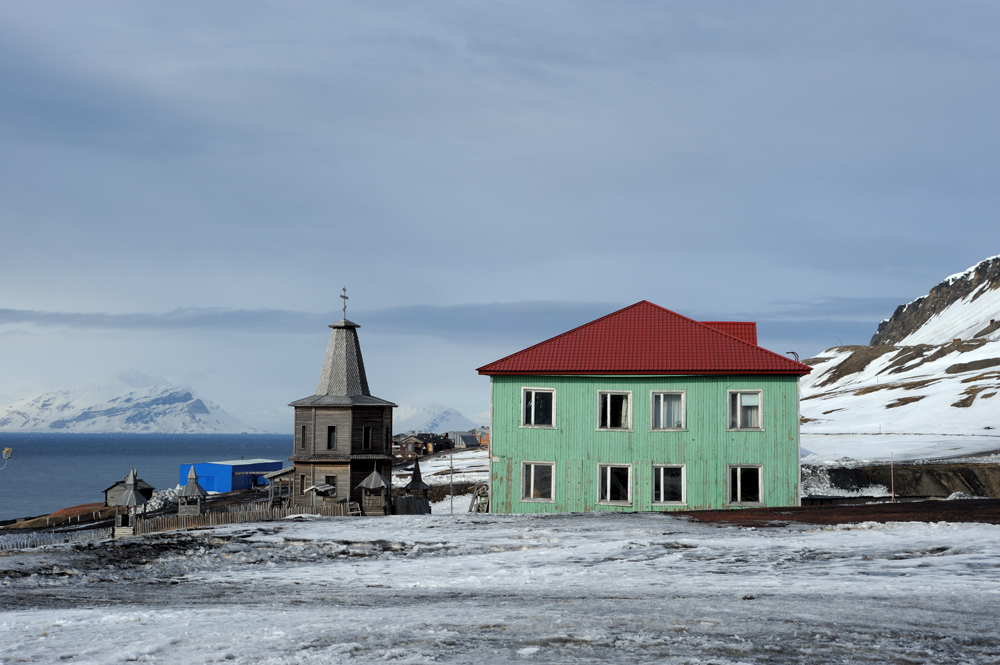
This chapel was buit in 2006 after the crash of the plane with regular miner shift. It is alway open, but there is no local priest in the town, just somebody came twice a year.
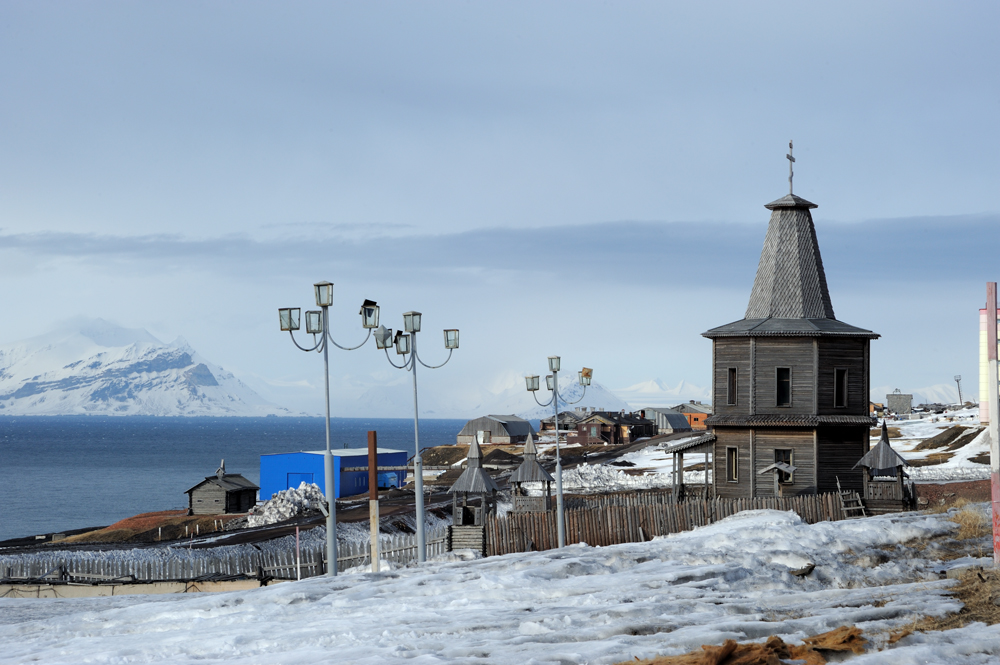
Souvenirs are interesting not only for tourist.
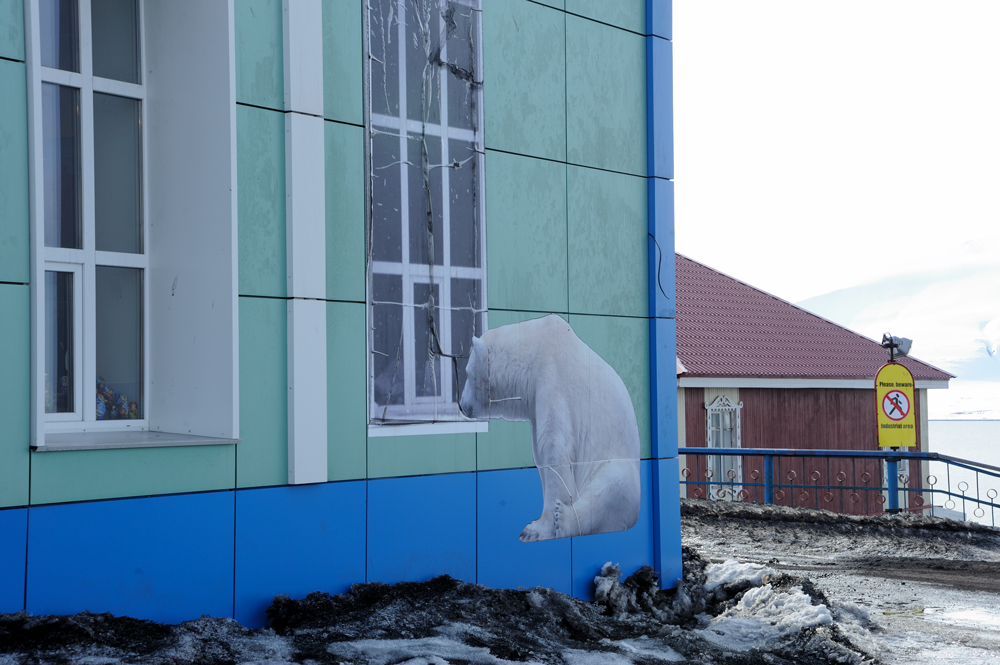
On the way back to Longiear.
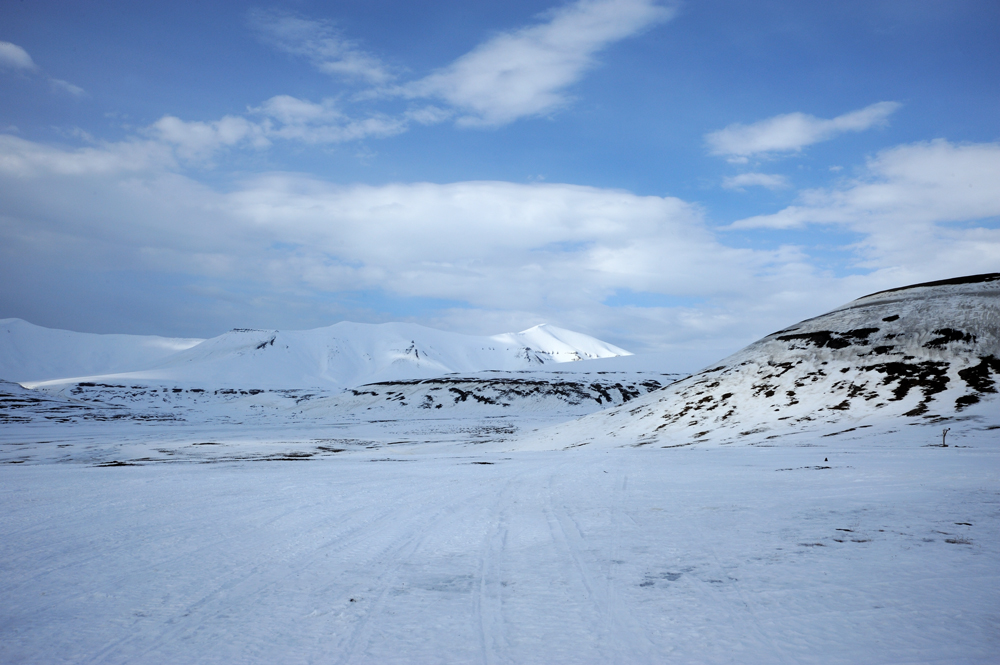
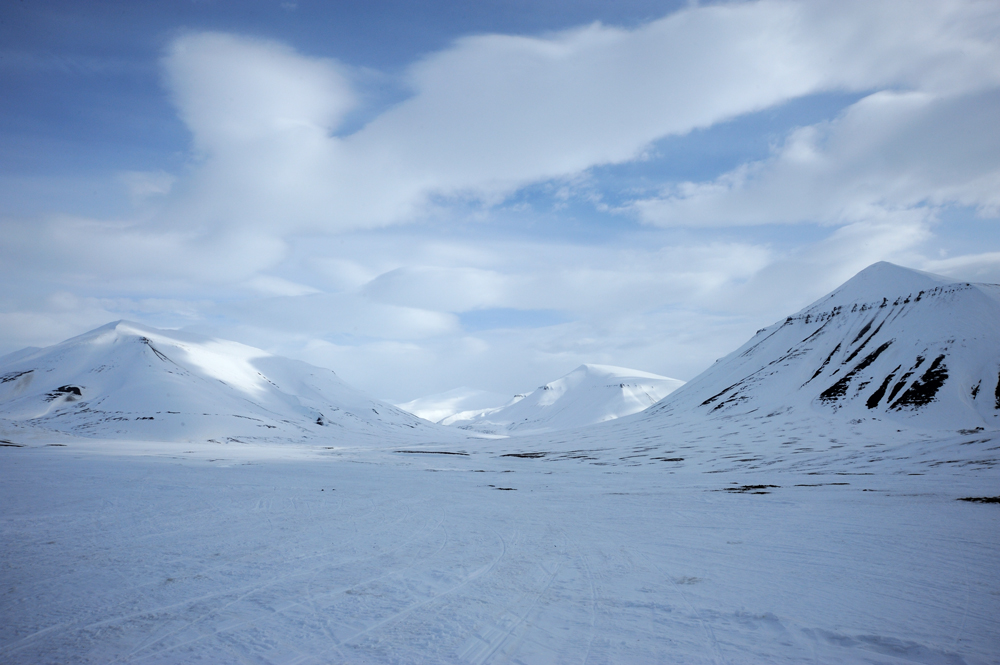
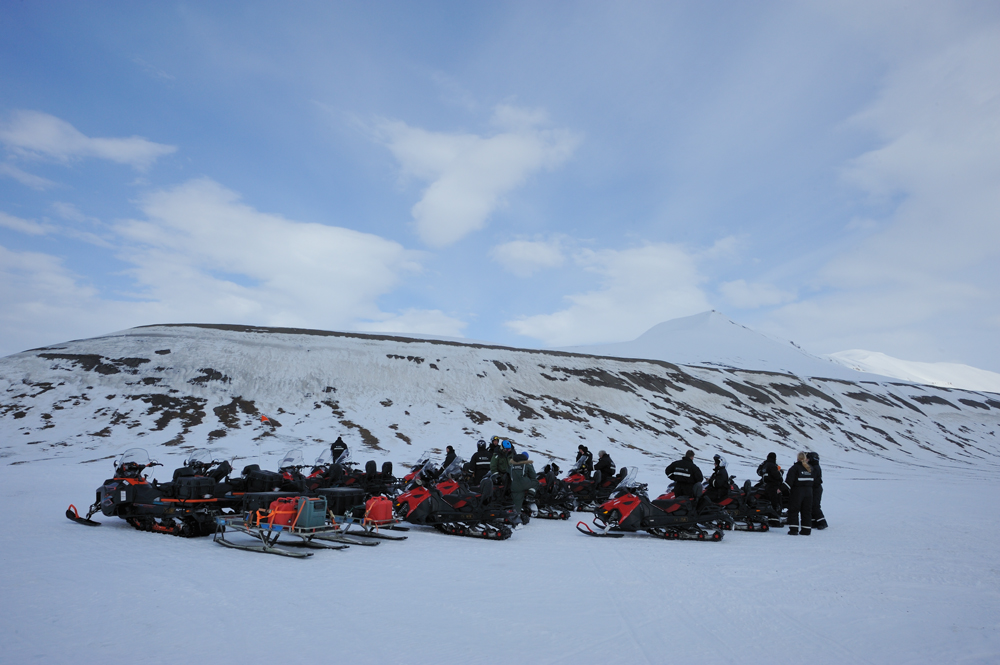
Our Spitsberged adventure is over. The island is absolutely beautiful, and I even think about second visit one day.